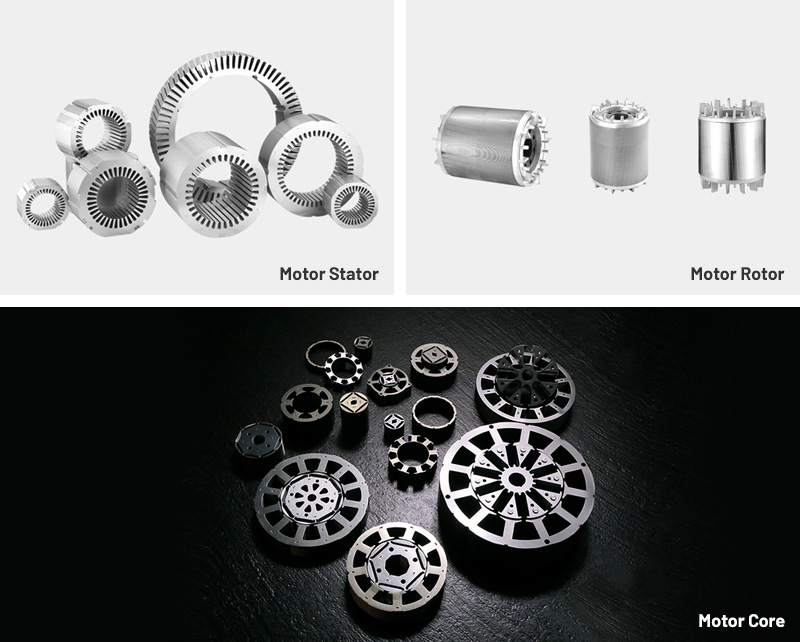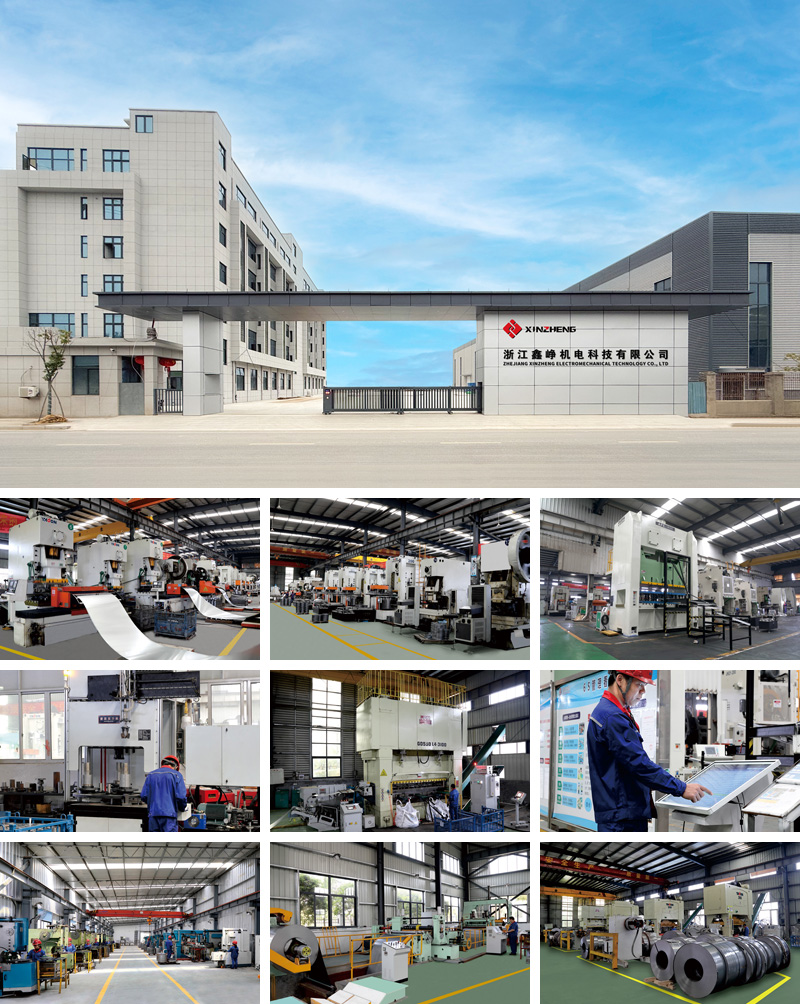As electric motors become increasingly integral to modern industrial, automotive, and consumer applications, noise reduction has emerged as a critical performance metric. Vibrations and acoustic emissions not only affect user comfort in residential or automotive environments but can also indicate inefficiencies or mechanical stress within the motor itself. Traditional motor laminations may generate micro-vibrations due to slight inconsistencies in thickness, stacking, or magnetic properties, leading to unwanted noise and energy loss.
Low-noise motor laminations are engineered to mitigate these effects by optimizing material selection, geometric precision, and manufacturing processes. The demand is particularly strong in sectors where operational silence and efficiency are essential, including electric vehicles (EVs), HVAC systems, robotics, and industrial automation. In these markets, quiet operation improves customer experience, meets regulatory noise standards, and enhances perceived product quality.
Motor laminations are thin sheets of electrical steel assembled to form the stator and rotor cores of AC and DC motors. Their primary function is to guide magnetic flux while minimizing eddy current and hysteresis losses. However, slight imperfections in material, thickness, or stacking can lead to micro-vibrations and audible noise during motor operation.
Low-noise motor laminations address this challenge through two technical principles:
Precision Engineering: Each lamination is manufactured to tight tolerances in thickness, shape, and edge quality. This ensures consistent air gaps and uniform magnetic paths, reducing sources of vibration.
Acoustic Optimization: Laminations are designed with specific geometries and material treatments to dampen mechanical vibrations, minimizing resonance within the motor core.
By adhering to these principles, low-noise laminations improve both motor efficiency and operational comfort, making them essential in high-precision and consumer-facing applications.
Low-noise motor laminations are typically produced from:
Electrical Steel (Silicon Steel): High-purity silicon steel with 2.5–3.5% silicon content reduces eddy current losses and maintains consistent magnetic properties.
Alloyed Electrical Steels: For high-performance or high-speed motors, nickel-iron or iron-cobalt alloys may be used to enhance mechanical strength, magnetic saturation, and thermal stability.
Insulation Coatings: Laminations are coated with heat- and vibration-resistant insulation to prevent inter-lamination currents and support long-term durability.
The laminations are designed to provide both mechanical stability and magnetic uniformity. Precision die-cutting or laser cutting creates clean edges and reduces burrs, which can otherwise contribute to vibration. Laminations are stacked with consistent orientation and clamping pressure to maintain flatness and minimize air-gap variation.
Key performance indicators include:
Noise Reduction: Optimized geometry and precise assembly reduce mechanical vibrations and audible noise.
Magnetic Efficiency: High-quality steel and uniform stacking ensure low hysteresis and eddy current losses.
Mechanical Stability: Laminations resist deformation during assembly and operation, preserving air-gap consistency.
Thermal Reliability: Coatings and materials maintain performance across operational temperature ranges.
Material Preparation: Electrical steel coils are inspected and rolled to precise thickness.
Cutting: High-precision die-cutting or laser cutting produces laminations with minimal burrs and exact dimensions.
Annealing: Stress-relief heat treatment ensures flatness and magnetic consistency.
Insulation Application: Coatings are applied and cured to withstand thermal and mechanical stress.
Stacking and Clamping: Laminations are assembled into stator or rotor cores with precise alignment, reducing sources of vibration.
The effectiveness of low-noise motor laminations depends on several critical factors:
Material Purity and Consistency: Impurities or variable alloy content can cause uneven magnetic properties and increased noise.
Dimensional Accuracy: Variations in thickness or geometry lead to inconsistent air gaps and mechanical vibration.
Insulation Integrity: Poor or uneven coatings can result in inter-lamination currents, generating heat and additional noise.
Residual Stress: Insufficient stress-relief annealing can leave laminations prone to warping or micro-deformation.
Assembly Precision: Misalignment or uneven stacking can amplify vibration and acoustic emissions.
Selecting a reliable supplier is essential for consistent low-noise performance:
Material Certification: Suppliers must provide detailed specifications, including magnetic permeability, tensile strength, and silicon content.
Process Transparency: Clear documentation of cutting, annealing, and coating processes ensures reproducibility.
Quality Assurance: Inspection protocols for flatness, dimensional tolerances, and insulation quality are critical.
Production Capacity: The ability to deliver consistent batches at scale is essential for OEMs and large-scale industrial projects.
Standards Compliance: Suppliers should adhere to industry standards, including ISO certifications, environmental regulations, and relevant motor performance criteria.
Despite advanced manufacturing techniques, several challenges remain:
High Production Costs: Precision materials, tooling, and quality control increase manufacturing expenses.
Complex Manufacturing: Maintaining tight tolerances while minimizing burrs and residual stress requires advanced machinery and skilled labor.
Thermal and Mechanical Trade-offs: Balancing noise reduction, magnetic efficiency, and structural stability is a complex engineering task.
Supply Variability: Differences in steel quality, coating performance, or annealing processes across suppliers can affect motor consistency.
Low-noise motor laminations are particularly important in applications where sound and vibration reduction is critical:
Electric Vehicles: Traction motors and auxiliary motors benefit from reduced cabin noise and enhanced passenger comfort.
HVAC Systems: Quiet motors improve indoor air quality systems and residential appliances, meeting consumer expectations.
Industrial Automation: Robotics and precision machinery rely on low-vibration operation for accuracy and longevity.
Renewable Energy Generators: Wind turbines and small-scale hydro generators use low-noise laminations to minimize vibration and mechanical stress.
Medical Equipment: Motors in imaging and laboratory devices require near-silent operation for patient safety and procedural accuracy.
The motor industry continues to innovate in materials, manufacturing, and design to improve acoustic performance:
Advanced Alloys: Nickel-iron and iron-cobalt laminations enhance both magnetic and mechanical properties for low-noise operation.
Enhanced Coatings: Inorganic and hybrid insulation coatings improve vibration damping and thermal stability.
Precision Manufacturing: Laser cutting, EDM, and automated stacking techniques increase dimensional accuracy and reduce burr formation.
Integrated Noise Reduction: Laminations are increasingly designed in tandem with motor housing and rotor design to optimize acoustic performance.
Global Standardization: Industry-wide specifications ensure consistent low-noise performance across suppliers and geographies.
Q: What defines a low-noise motor lamination?
A: Laminations engineered for high dimensional accuracy, minimal burrs, and vibration-damping characteristics to reduce mechanical noise during motor operation.
Q: How do low-noise laminations improve motor efficiency?
A: Precision cutting and stacking reduce air-gap variations and mechanical vibrations, decreasing magnetic losses and improving overall energy efficiency.
Q: Are these laminations suitable for high-speed motors?
A: Yes. They are designed to maintain structural integrity, dimensional accuracy, and low acoustic emissions even under high rotational speeds.
Q: Do low-noise laminations increase motor cost?
A: While manufacturing costs are higher due to advanced materials and precision processes, they reduce long-term operational noise, improve efficiency, and extend motor life, offering a favorable total cost of ownership.
Low-noise motor laminations are a critical component for high-performance, efficient, and quiet electric motors. By combining premium materials, precise manufacturing, stress-relief processes, and optimized insulation, these laminations ensure mechanical stability, magnetic consistency, and reduced acoustic emissions. Applications span electric vehicles, industrial automation, HVAC systems, renewable energy, and medical equipment, where noise reduction and efficiency are essential. Continued innovation in alloys, coatings, and precision manufacturing positions low-noise laminations as a key enabler of next-generation motors, delivering improved reliability, comfort, and performance for global markets.
Product Category

Comprehensive Strength


Copyright © Zhejiang Xinzheng Electromechanical Technology Co., Ltd. All Rights Reserved.
This website uses cookies to ensure you get the best experience on our website.